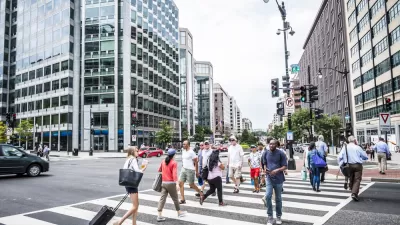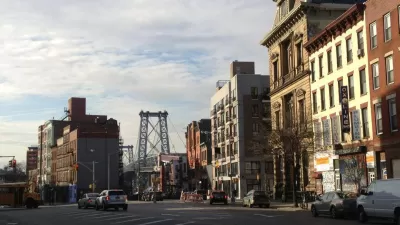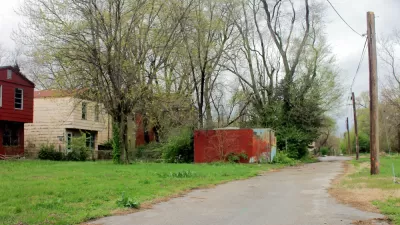Joseph Berger describes a demographic transformation underway on the Bronx's Grand Concourse.
2010 was the first census year in nearly half a century that New York's South Bronx saw an increase in its white population, "ever since an exodus that cost the Bronx over 300,000 residents and turned the Concourse [neighborhood] into an emblem of white flight and urban disenchantment," Berger writes.
The increase was small in number (less than 500 new residents in ten years) but dramatic in scale (up 17.5%), and represents a shift that is reflected in the changing landscape of the neighborhood. As Berger puts it, "The signs of gentrification include such clichés as a yoga studio, arugula and organic spinach at the local Foodtown supermarket, a weekly farmers' market in the warmer seasons and a new deli that sells croissants and banana-chip yogurt muffins."
However, some residents resent the attention the changing demographics have drawn, pointing out that black and Latino professionals have raised families in the neighborhood just fine for some time now. Moreover, crime has been falling steadily in South Bronx for 20 years, long before whites began moving back in. Said schoolteacher Amy Moran, "I'm cautious about a narrative that just because white people move in makes it a livable place. This has been a livable place for people who were already here."
Among the reasons Berger cites for the trend are affordable real estate, a newly designated historic district, improved roadways and parks, and "a reasonable commute to jobs in Manhattan."
FULL STORY: No Longer Burning, the South Bronx Gentrifies

Alabama: Trump Terminates Settlements for Black Communities Harmed By Raw Sewage
Trump deemed the landmark civil rights agreement “illegal DEI and environmental justice policy.”

Study: Maui’s Plan to Convert Vacation Rentals to Long-Term Housing Could Cause Nearly $1 Billion Economic Loss
The plan would reduce visitor accommodation by 25% resulting in 1,900 jobs lost.

Planetizen Federal Action Tracker
A weekly monitor of how Trump’s orders and actions are impacting planners and planning in America.

Wind Energy on the Rise Despite Federal Policy Reversal
The Trump administration is revoking federal support for renewable energy, but demand for new projects continues unabated.

Passengers Flock to Caltrain After Electrification
The new electric trains are running faster and more reliably, leading to strong ridership growth on the Bay Area rail system.

Texas Churches Rally Behind ‘Yes in God’s Back Yard’ Legislation
Religious leaders want the state to reduce zoning regulations to streamline leasing church-owned land to housing developers.
Urban Design for Planners 1: Software Tools
This six-course series explores essential urban design concepts using open source software and equips planners with the tools they need to participate fully in the urban design process.
Planning for Universal Design
Learn the tools for implementing Universal Design in planning regulations.
Caltrans
Smith Gee Studio
Institute for Housing and Urban Development Studies (IHS)
City of Grandview
Harvard GSD Executive Education
Toledo-Lucas County Plan Commissions
Salt Lake City
NYU Wagner Graduate School of Public Service





























